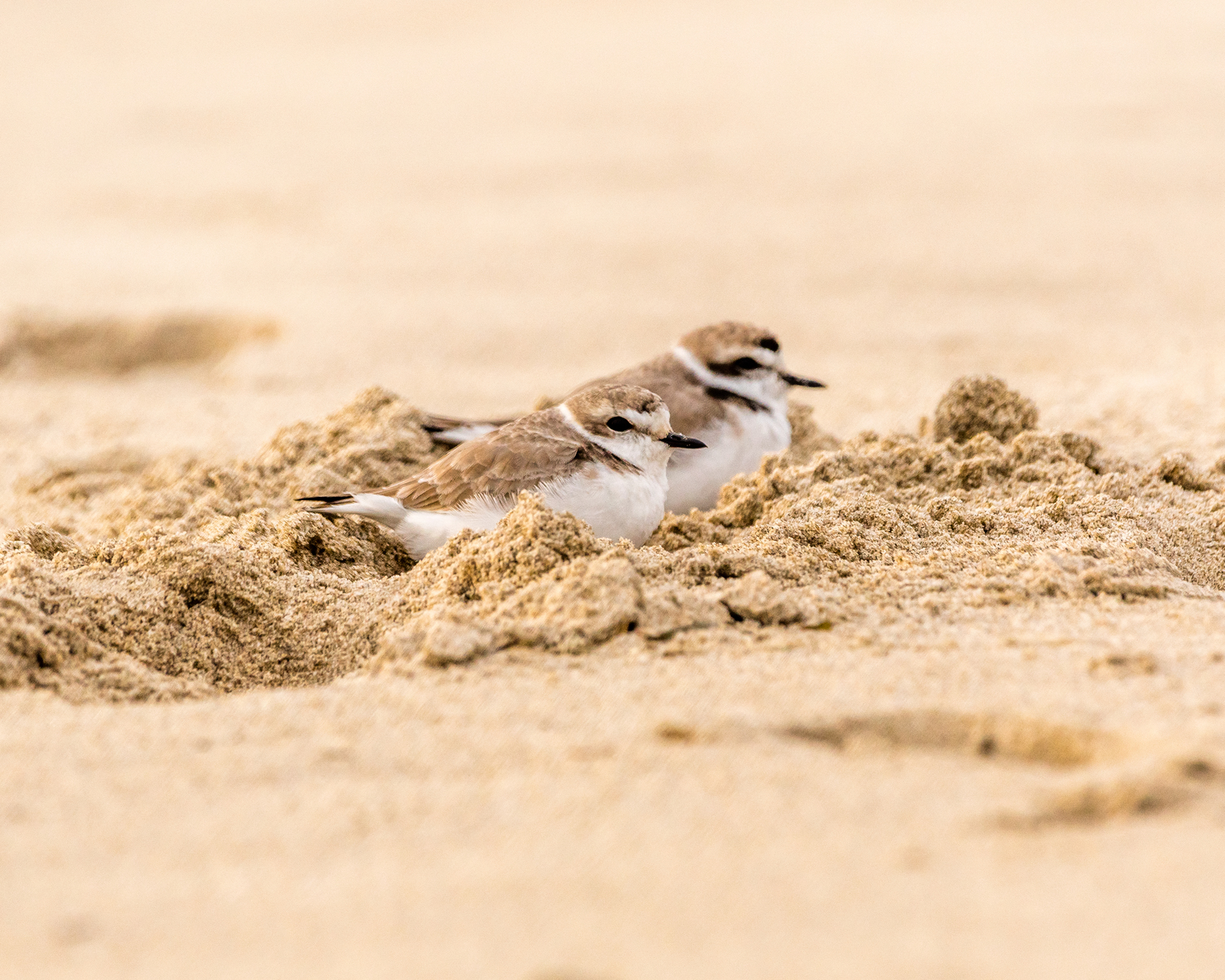Beachgoers are urged to help recovery efforts of the threatened western snowy plover by respecting nesting areas and beach restrictions during nesting season, March 15 – Sept. 15. Beachgoers will see signs and ropes that identify sensitive plover nesting areas and list restrictions, including dogs (even on a leash), vehicles, kites, drones, camping and fires. In Tillamook County, those areas include Nehalem Spit, Bay Ocean Spit, Netarts Spit and South Sand Lake Spit; to the north Clatsop Spit is also restricted. When restrictions are in place that means that a nesting pair have been identified in the area.
“We’re making great strides in reversing the downward slide of this species,” said Cindy Burns, Siuslaw National Forest wildlife biologist. “But it takes all of us, so we urge people to do their part to understand nesting season rules and to share the beach this spring and summer.”
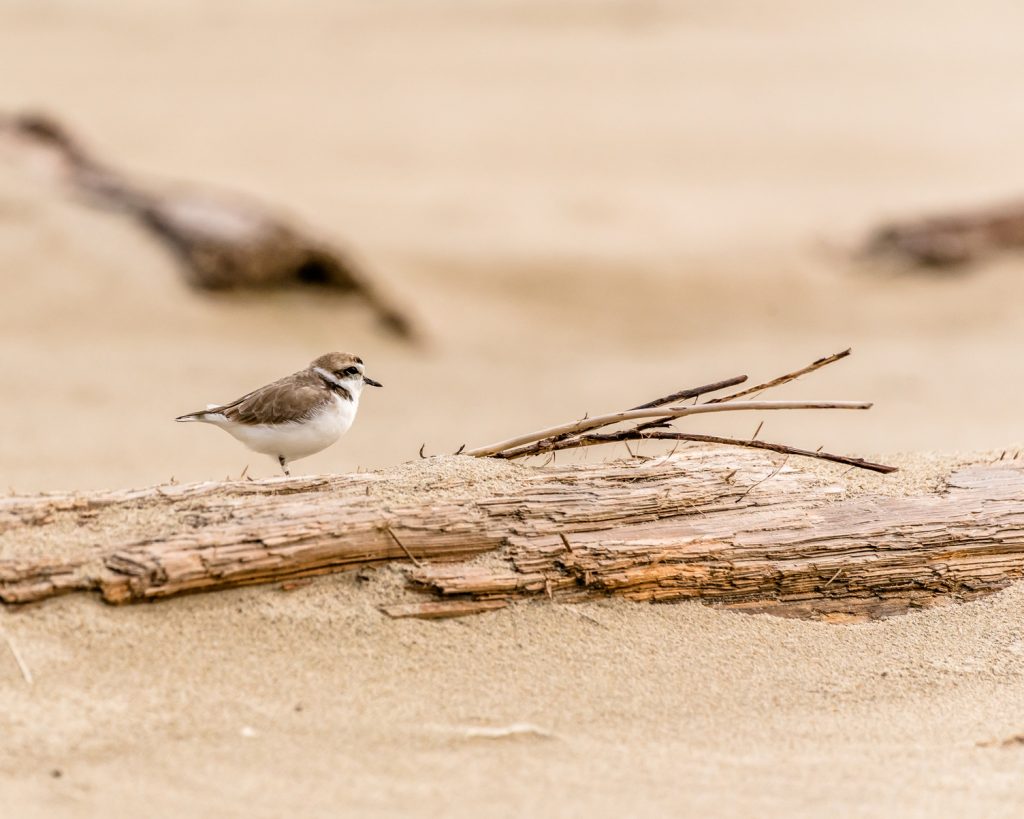
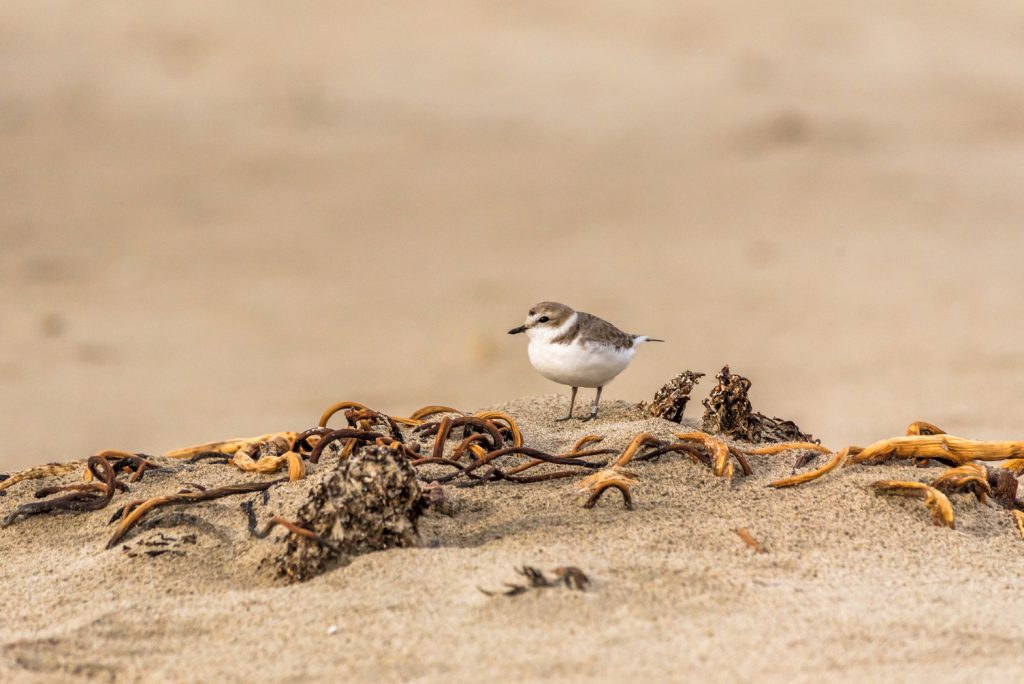
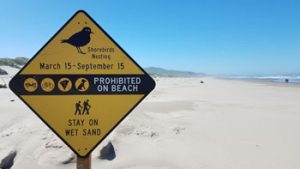
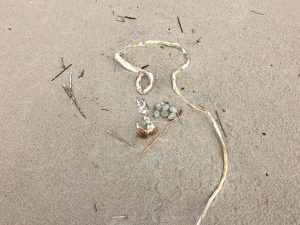 Snowy plover eggs – can you find them?
Snowy plover eggs – can you find them?
On these plover beaches, the dry sand and dunes are closed to all access — except along official trails and on the wet sand — to protect eggs and chicks. Visitors may see roped off areas within these plover management areas, which serve to protect the most sensitive habitat; however, all dry sand on both sides of the rope is closed. Wet sand areas on plover beaches remain open to foot and equestrian traffic. All other recreation is off limits, include walking your dog (even on a leash), driving a vehicle, riding a bicycle, camping, fires, and flying kites or drones.
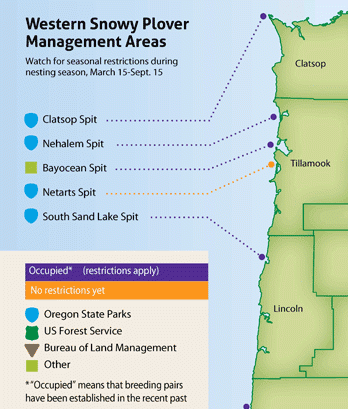
“Visitors will have access to hundreds of miles of beaches without these seasonal restrictions,” said Laurel Hillmann, Ocean Shores Specialist for Oregon State Parks. “By planning your trip, you can enjoy the coast and help keep these special birds safe.”
Visitors to the Oregon Dunes National Recreation Area can review https://www.fs.usda.gov/recarea/siuslaw/recreation/recarea/?recid=42465&actid=93 to identify unrestricted recreation areas and information on riding motor vehicles on the sand.
Several land managers oversee beach activity for plover protection, including the U. S. Forest Service (USFS), the Bureau of Land Management (BLM) and Oregon Parks and Recreation Department (OPRD).
The U.S. Fish and Wildlife Service listed western snowy plovers as a threatened species in 1993. Habitat loss from invasive plants — as well as human disturbances, including litter and discarded food scraps that attract predators — have contributed to the birds’ decline. The Oregon Dunes Restoration Collaborative (https://www.saveoregondunes.org/) is working with land managers to develop and implement a restoration strategy as well as raise public awareness about the need to restore the dunes ecosystem for snowy plover, rare plants and animals, and the unique recreation opportunities offered here.

